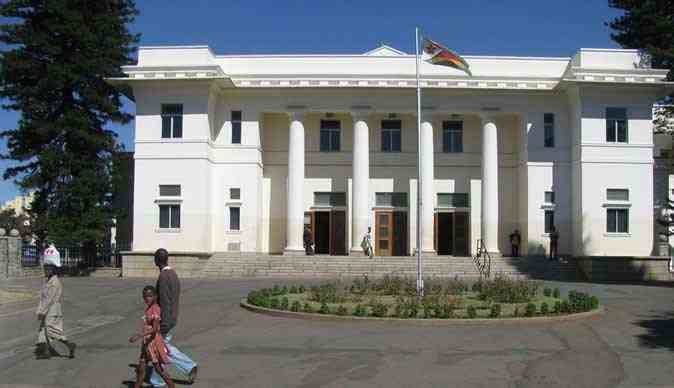
IN the intricate interplay between development and human rights, governance and the human spirit, the question of territoriality emerges as a powerful force, shaping community resistance against relocations. This article explores the profound impact of territorial displacement on communities, drawing insights from historical events and contemporary struggles, with a focus on the ongoing case of the Gwayi-Shangani Dam in Binga, Zimbabwe, which stands as a stark illustration of the complexities surrounding forced relocations.
Understanding territoriality
Territoriality is not merely a geographical concept; it is a deeply ingrained psychological phenomenon, influencing identity, culture and a sense of belonging. In environmental psychology, territoriality refers to the innate tendency of individuals or groups to establish and defend their physical space or territory (Sommer, 1969; Altman, 1975).
This concept is deeply rooted in the interaction between people and their environment, shedding light on how individuals connect, identify, and establish a sense of ownership over a particular space and resources.
When governments propose relocations for national projects or disaster mitigation, they unwittingly disturb this intricate tapestry, triggering resistance embedded in the very essence of human connection to place.
To understand the profound connection individuals have with their environment, the psychological theory of place attachment offers a better explanation.
This theory posits that people develop deep emotional bonds with specific places, integrating them into their identity and sense of self.
Disrupting these bonds, can lead to a profound sense of loss, disconnection and resistance. The emotional toll is not just about physical relocation but the rupture of longstanding ties to the land, impacting the residents' sense of belonging and well-being.
- Teachers, other civil servants face off
- Veld fire management strategies for 2022
- Binga villagers dig in over relocations
- Magistrate in court for abuse of power
Keep Reading
Gwayi-Shangani Dam relocation: A microcosm of resistance
South of Binga, in Zimbabwe, the looming closure of the floodgates for the Gwayi-Shangani Dam has set the stage for a clash between territoriality and government initiatives. Communities residing in low-lying areas, before the highwater point, notably Lubimbi, face displacement to pave way for the Gwayi-Shangani Lake.
Despite consultations, a palpable resistance has surfaced, emphasising the complexity of balancing development and preserving the sanctity of homes, coupled with respect for human rights and human dignity.
Position papers and settlement models presented during community consultations highlight the discord between the government and the affected communities.
The preferred relocation area, Nakanono, resonates with historical significance, as it was the site of a previous displacement for a Cold Storage Commission project. Frustration peaks as government plans to settle only 69 households in Nakanono, leaving 657 households displaced to areas potentially devoid of water access and dam benefits.
In the aftermath of a recent community consultation meeting, the disappointment echoed through the communities. Influenced by district stakeholders, the government's decision to relocate a fraction of households to Nakanono raises questions about transparency, equity and fair compensation. Young activists have captured this sentiment through position papers, shedding light on the disparity between promised resettlement land, compensation, the true value of community investments and territorial significance.
Case studies and historical echoes
To vividly illustrate the enduring psychological impact of uprooting communities from their ancestral lands, there are several case studies and historical echoes from different countries around the world.
The “trail of tears” in the United States, where tribes were forcibly relocated from their ancestral lands in Georgia, Alabama, Tennessee and North Carolina to new territories west of the Mississippi River, is one such parallel. The journey, undertaken in the fall and winter of 1838–1839, was fatal for a fourth of the Cherokee population.
Families torn from their homes faced unimaginable hardships, with many perishing on the gruelling journey. The distressing story of the Cherokee nation, stripped of its land and identity serves as a haunting reminder of the enduring psychological scars inflicted by territorial displacement.
Turning our gaze to the Three Gorges Dam in China, which caused the displacement of over 1,3 million people and the destruction of natural features and countless rare architectural and archaeological sites, we witness the upheaval faced by communities in the path of development.
Personal accounts from those directly affected bring the emotional toll into sharp focus. The displacement not only robbed residents of their physical homes.
It left an indelible mark on their cultural heritage, highlighting the multifaceted dimensions of territorial displacement.
They vividly recount the submergence of their ancestral villages and shrines and the erasure of centuries-old traditions. There are many other such dehumanising and disheartening stories.
In Zimbabwe, the displacement and dispossession of thousands of the Gwembe, Tonga and Kore Kore people in the 1950s for the construction of the Kariba Dam serves as another poignant historical parallel to the current predicament being faced by their descendants.
The hydroelectric project, a symbol of development, came at the expense of communities who faced forced relocations. The enduring impact of such historical injustices resonates, casting a long shadow on the current community in the limelight, which, although not directly affected by the 1950s displacement, shares the same narrative of resisting involuntary relocations.
Government’s unilateral relocations and the domino effect of resistance
When communities resist forced relocations, a domino effect is set in motion. Those who refuse to be relocated, driven by a strong attachment to their ancestral homes and resources, face heightened consequential risks. However, in numerous instances, governments proceed with relocations irrespective of community objections, often bypassing international laws and best practices. The Gwayi-Shangani Dam case in Binga, Zimbabwe, echoes this trend as communities are demanding for a decent relocation, to their site of choice and in line with United Nations guiding principles on internal displacement. Despite international guidelines advocating for inclusive consultations and consent, some governments choose to prioritise their development goals over the rights and well-being of their citizens.
As disasters unfold due to delayed or contested relocations, the toll on human lives and livelihoods becomes painfully evident. Families who stood their ground in the face of forced displacement now bear the brunt of natural or project-induced calamities. Lives are lost, homes destroyed, and entire communities left grappling with the aftermath of a tragedy that could have been averted through more inclusive and compassionate relocation and disaster risk reduction strategies.
Recommendations to government and humanitarian agencies
Understanding the profound impact of territoriality is paramount for policymakers embarking on relocation initiatives. The tragic ripple effect of forced relocations unveils a harsh reality – a collision between development imperatives and the fundamental rights of communities. Governments and humanitarian agencies should prioritise transparent, inclusive consultations, considering historical context and community preferences. Acknowledging the emotional and cultural ties to the land, compensatory measures must align with the true cost of displacement, ensuring equitable outcomes for all affected parties. Additionally, governments must heed to international laws and prioritise inclusive dialogue to navigate the delicate balance between progress and human well-being. The stories of resistance and subsequent disasters serve as cautionary tales, underscoring the urgent need for ethical and humane approaches to relocation that prioritise lives over projects.
Conclusion
The Gwayi-Shangani Dam case emerges as a distressing chapter in the global story of territorial displacement. By exploring historical parallels, delving into case studies, and understanding the psychological impacts through real-life narratives and ongoing struggles, we gain a comprehensive understanding of the multifaceted nature of this issue. As we navigate the delicate balance between development and human rights, the lessons from Binga beckon us to approach such challenges with empathy and a profound respect for the communities affected.









